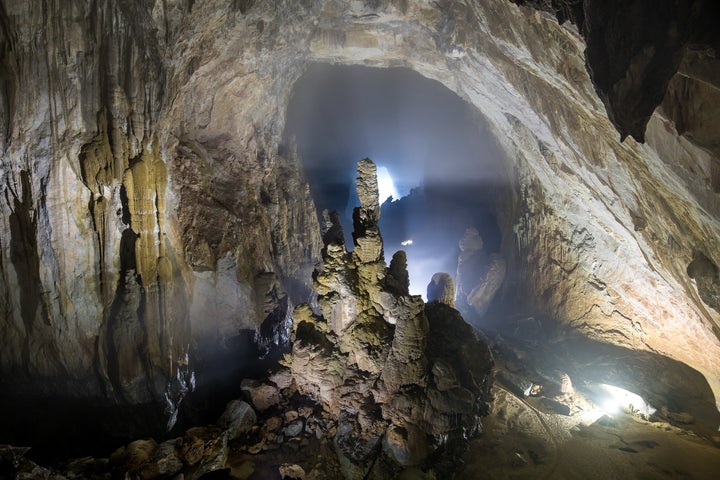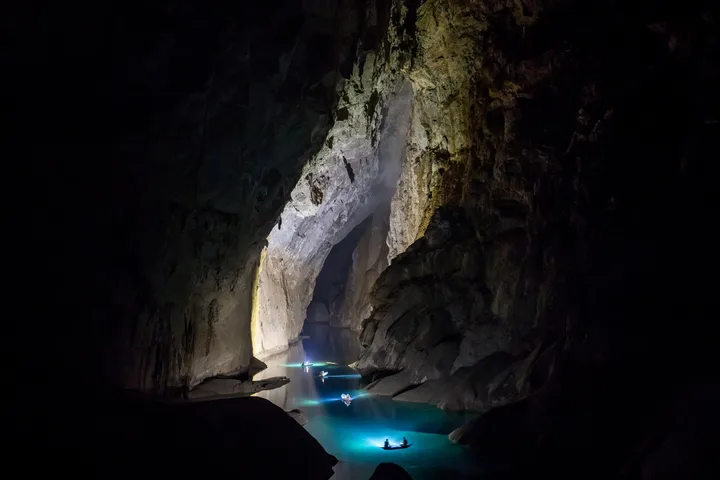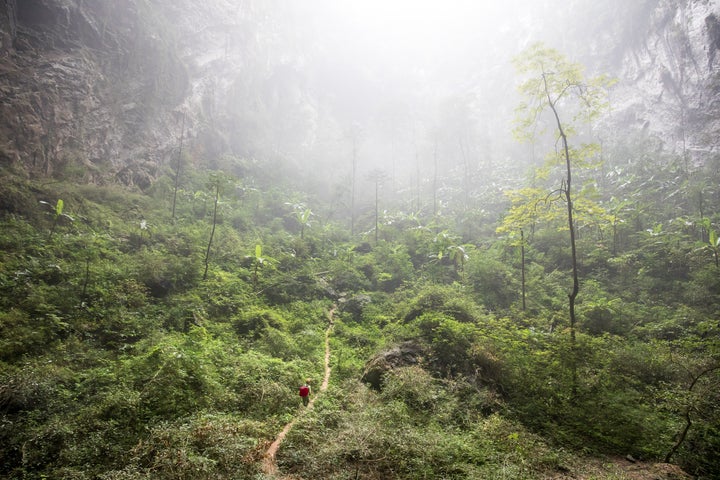

Such threats are not new.
In 2014, a group of local activists helped stave off a proposal to build a $212 million, 6.5 mile-long cable car throughout Phong Nha-Ke Bang park that would traverse parts of Son Doong. The announcement drew widespread condemnation despite assurances from the cable car company, Sun Group, that it would be an environmentally friendly way to view the park that'd bring "thousands of jobs for the poor local people."
Any plans at Son Doong would likely echo another project, completed by another company last year, at the country's Mount Fansipan, one of the tallest peaks in the region. The site is now home to a cable car that cut a journey that used to take three days on foot down to 20 minutes. The system can now bring 2,000 people to the summit every hour, and, like the country's iconic Ha Long Bay, has become a hive of tourist activity.
Environmentalists fear that if the Son Doong project were to go forward, it would bring hordes of tourists to a pristine ecosystem protected by its relative unreachability.
A Facebook group operating under the name Save Son Doong has called on the Vietnamese government to again reject the proposal, saying the "project must be stopped before it has a huge and damaging impact on the Son Doong cave and the ecosystem of the entire Phong Nha-Ke Bang national park," a Change.org petition organized by the group says.
Those concerns were echoed by the British Cave Research Association, the group that declared Son Doong the largest of its kind and, alongside the explorer Howard Limbert, led the first expedition to the site.
"Caves are fragile environments. They don't regenerate very quickly, and once they're broken, they're broken," Deb Limbert, a team leader for the group, told HuffPost RYOT.
Government officials in the province of Quang Binh, where Son Doong is located, have told local media there are no plans to support a new cable car project.
In March, HuffPost RYOT filmed a representative of the cable car company traveling to the cave with Phong Nha-Ke Bang park employees.
Take a look at more photos of Son Doong cave below.


